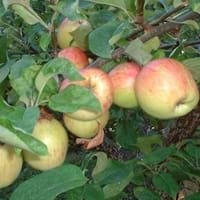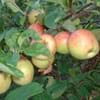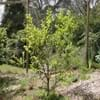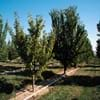Life Span
Perennial
Perennial
Origin
Eastern Europe, Southern Europe, Russia/Siberia, Southern Asia, Western Asia
China
Types
Not avaialable
Actinidia deliciosa chlorocarpa, Actinidia deliciosa deliciosa
Number of Varieties
Not Available
Habitat
Hillside, Mountain Slopes, Temperate Regions
Mountain forests
USDA Hardiness Zone
2-8
6-9
Sunset Zone
Not Available
4, 5, 6, 7, 8, 9, 12, 14, 15, 16, 17, 18, 19, 20, 21, 22, 23, 24
Habit
Spreading
Vining/Climbing
Minimum Width
Not Available
Flower Color
White, Light Pink
Light Yellow, Ivory
Flower Color Modifier
Bicolor
Bicolor
Fruit Color
Red, Light Yellow
Tan, Brown
Leaf Color in Spring
Green
Green, Light Green
Leaf Color in Summer
Green
Green
Leaf Color in Fall
Green, Light Yellow, Brown
Light Green, Yellow green
Leaf Color in Winter
Light Green
Light Green
Leaf Shape
Oblong
Heart-shaped
Plant Season
Spring, Fall
Spring, Summer, Fall
Sunlight
Full Sun, Partial Sun, Partial shade
Full Sun, Partial Sun
Type of Soil
Loam, Sand
Clay, Loam
The pH of Soil
Acidic, Neutral
Acidic, Neutral
Soil Drainage
Well drained
Average
Bloom Time
Early Spring, Spring
Late Spring, Early Summer
Tolerances
Drought
Drought
Where to Plant?
Ground
Ground
How to Plant?
Grafting, Seedlings, Transplanting
Layering, Softwood cuttings
Plant Maintenance
Medium
Medium
Watering Requirements
Medium
Water daily during growing season
In Summer
Lots of watering
Lots of watering
In Spring
Moderate
Moderate
In Winter
Average Water
Average Water
Soil pH
Acidic, Neutral
Acidic, Neutral
Soil Type
Loam, Sand
Clay, Loam
Soil Drainage Capacity
Well drained
Average
Sun Exposure
Full Sun, Partial Sun, Partial shade
Full Sun, Partial Sun
Pruning
Remove damaged leaves, Remove dead branches, Remove dead leaves
Prune for shortening long shoots, Prune in early summer, Prune in late winter
Fertilizers
All-Purpose Liquid Fertilizer
Self-fertile
Pests and Diseases
Black rot, Leaf spot, Scab
Armillaria root rot, Armored scales, Bleeding canker, Botrytis Blight, Crown gall, Nematodes, Phytophthora Root Rot, Red blotch
Plant Tolerance
Drought
Drought
Flower Petal Number
Single
Single
Foliage Texture
Medium
Medium
Foliage Sheen
Matte
Matte
Attracts
Birds, Not Available
Not Available
Allergy
Mouth itching, Throat itching
Inflammation, Mouth itching, Throat itching
Aesthetic Uses
Not Used For Aesthetic Purpose
Not Used For Aesthetic Purpose
Beauty Benefits
Not Available
Beautiful Skin, Protects from sun damage
Environmental Uses
Air purification
Air purification
Medicinal Uses
Cancer, constipation, Diabetes, Diarrhea, Dysentry, Fever, Heart problems, Tooth ache
constipation, Heart problems, Low Blood Pressure
Part of Plant Used
Fruits
Fruits
Other Uses
Used As Food, Wood is used for making furniture
Used As Food, Used for its medicinal properties
Used As Indoor Plant
No
No
Used As Outdoor Plant
Yes
Yes
Garden Design
Edible, Fruit / Fruit Tree
Edible, Fruit / Fruit Tree, Rock Garden / Wall, Vine
Botanical Name
Malus domestica Wolf River
ACTINIDIA deliciosa
Common Name
Apple, Cider Apple, Cooking Apple, Wolf River Apple
Chinese Gooseberry, Fuzzy Kiwi, Kiwi
In Hindi
Wolf River Apple
कीवी फल
In German
Wolf River Apple
Kiwi, Chinesischer Strahlengriffel
In French
Wolf River Apple
Kiwi, Groseille de Chine, Yang Tao, Souris végétale
In Spanish
Wolf River Apple
kiwi, kivi, actinidia
In Greek
Wolf River Apple
Ακτινίδια
In Portuguese
Wolf River Apple
Quiuí
In Polish
Wolf River Apple
Owoc kiwi
In Latin
Wolf River Apple
Kiwi fructum
Phylum
Magnoliophyta
Magnoliophyta
Class
Magnoliopsida
Magnoliopsida
Family
Rosaceae
Actinidiaceae
Clade
Angiosperms, Eudicots, Rosids
Angiosperms, Asterids, Eudicots
Tribe
Not Available
Not Available
Subfamily
Not Available
Not Available
Season and Care of Wolf River Apple and Kiwifruit
Season and care of Wolf River Apple and Kiwifruit is important to know. While considering everything about Wolf River Apple and Kiwifruit Care, growing season is an essential factor. Wolf River Apple season is Spring and Fall and Kiwifruit season is Spring and Fall. The type of soil for Wolf River Apple is Loam, Sand and for Kiwifruit is Clay, Loam while the PH of soil for Wolf River Apple is Acidic, Neutral and for Kiwifruit is Acidic, Neutral.
Wolf River Apple and Kiwifruit Physical Information
Wolf River Apple and Kiwifruit physical information is very important for comparison. Wolf River Apple height is 610.00 cm and width 610.00 cm whereas Kiwifruit height is 610.00 cm and width Not Available. The color specification of Wolf River Apple and Kiwifruit are as follows:
Wolf River Apple flower color: White and Light Pink
Wolf River Apple leaf color: Green
Kiwifruit flower color: Light Yellow and Ivory
- Kiwifruit leaf color: Green and Light Green
Care of Wolf River Apple and Kiwifruit
Care of Wolf River Apple and Kiwifruit include pruning, fertilizers, watering etc. Wolf River Apple pruning is done Remove damaged leaves, Remove dead branches and Remove dead leaves and Kiwifruit pruning is done Prune for shortening long shoots, Prune in early summer and Prune in late winter. In summer Wolf River Apple needs Lots of watering and in winter, it needs Average Water. Whereas, in summer Kiwifruit needs Lots of watering and in winter, it needs Average Water.





